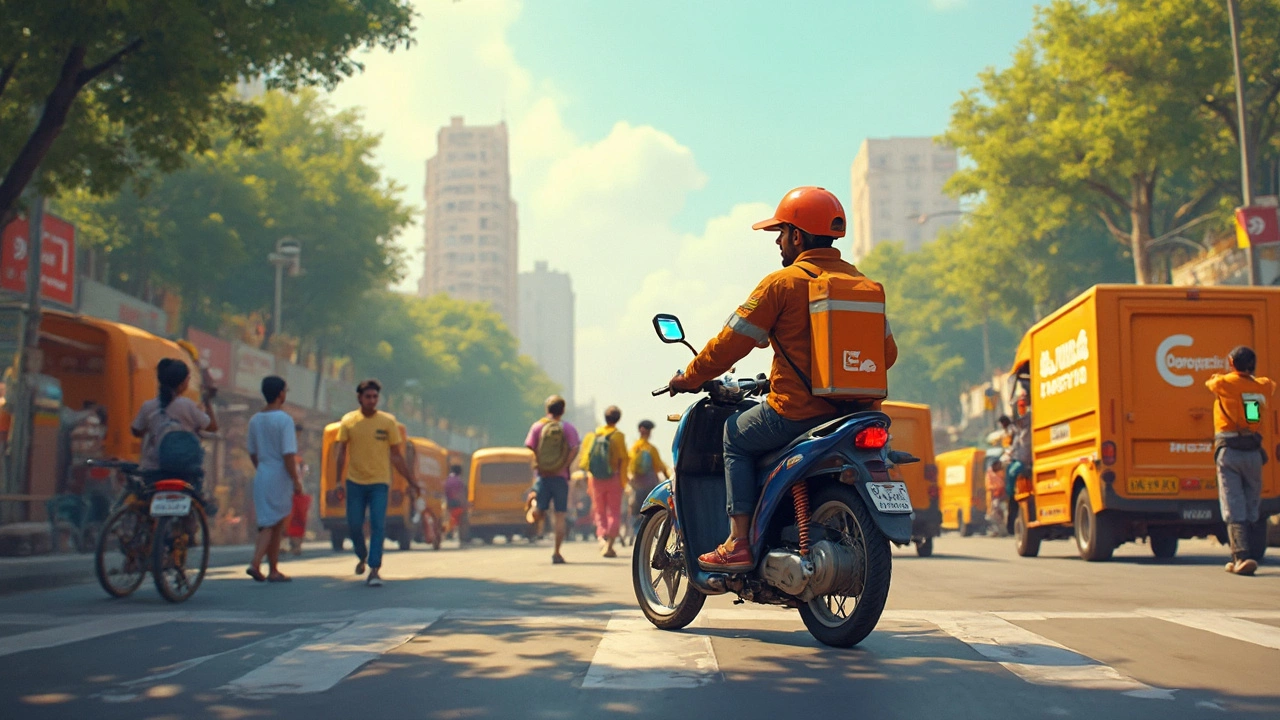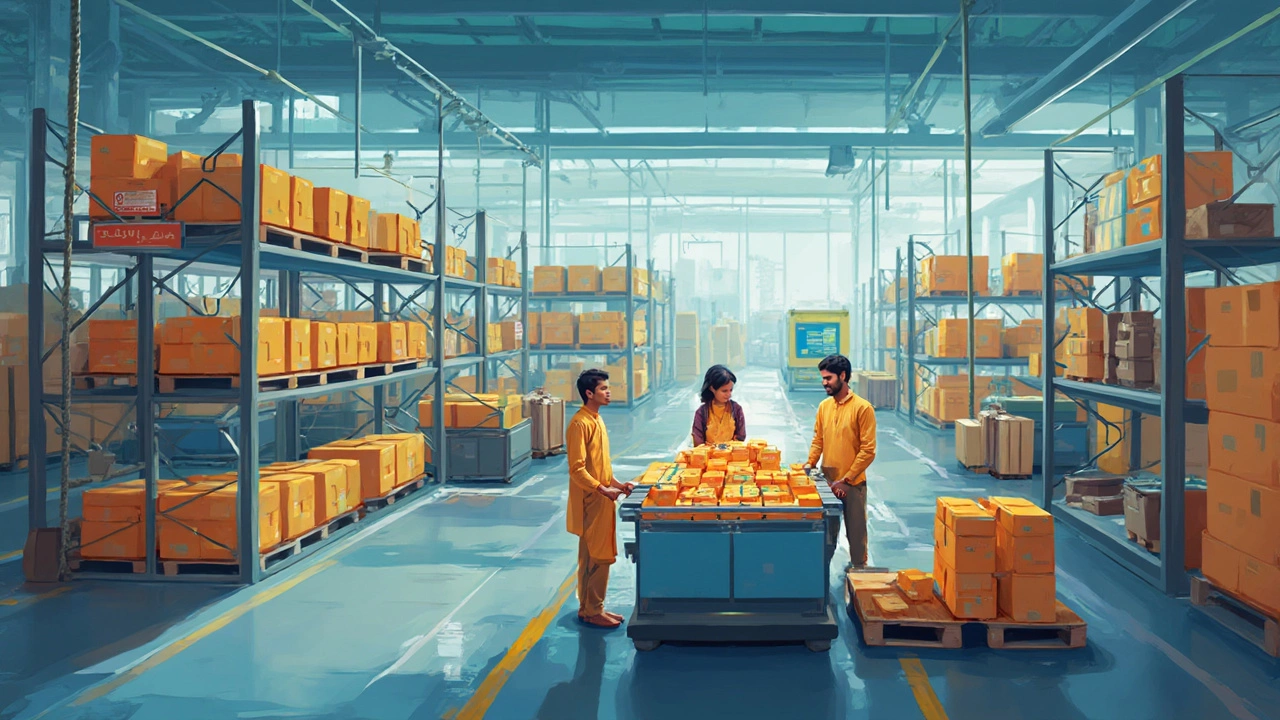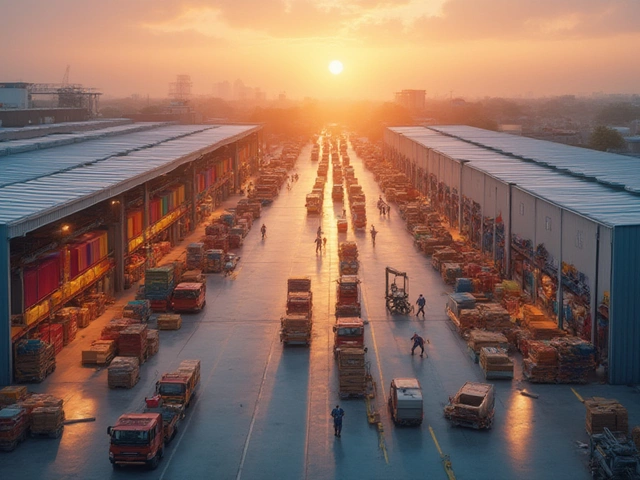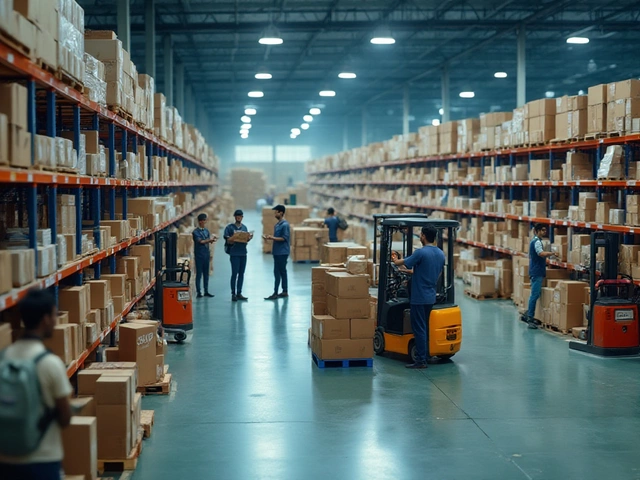Ever hit the 'Buy Now' button and wondered what happens next? Getting a package to your door might look simple, but there’s a big system running behind the scenes. That’s where logistics comes in—a fancy word for moving goods from one place to another, as smoothly as possible. But when you throw in the internet and e-commerce, things get way more interesting. Now we're talking about e-logistics: regular logistics supercharged by digital tech.
It's not just about trucks and warehouses anymore. E-logistics is all about speed, tracking, flexibility, and making sure you (and thousands of other folks clicking 'order') stay in the loop. Want to know why your favorite online store can promise next-day shipping? That’s e-logistics at work. Stick around and you’ll get a clear picture of how these two worlds—old-school logistics and its digital twin—really compare.
- Back to Basics: What Logistics Really Means
- The Digital Shift: E-Logistics Explained
- Major Differences Between Logistics and E-Logistics
- Real-World Wins: Tips and Facts for Modern Businesses
Back to Basics: What Logistics Really Means
When people talk about logistics, they're talking about everything it takes to move products from factory floors to store shelves or warehouses. It's about getting the right stuff, in the right amount, to the right place, and doing it on time. This goes way beyond just shipping. It covers storage, handling, packing, sorting, and even managing returns. It might sound simple, but trust me—it’s a serious operation, especially for big companies moving thousands of products all over the globe.
The main jobs in logistics include:
- Transportation—choosing the best routes and ways to move goods, whether by truck, ship, or plane.
- Warehousing—finding places to store products before they’re sold or shipped out.
- Inventory control—keeping track of what’s in stock, so you don’t run out or overload your shelves.
- Order fulfillment—getting orders picked, packed, and out the door, accurately and quickly.
- Returns management—handling products that come back, making sure they’re restocked, resold, or recycled.
Here’s a neat fact: companies can lose up to 30% of their potential sales because of supply chain issues, especially if they mess up the basics of logistics. That’s why brands like IKEA, Walmart, and Amazon spend billions on getting logistics right. It keeps businesses running and customers happy.
Logistics is like the backbone of any business that deals with physical products. Whether you’re selling shoes, TVs, or phone chargers, nailing these steps is key. Miss a beat, and you risk late deliveries, angry customers, and way more wasted money than you’d expect.
The Digital Shift: E-Logistics Explained
So what makes e-logistics different from regular logistics? It’s all about using the internet, digital tools, and real-time data to handle everything from order taking to final delivery. In the old days, businesses tracked shipments with paperwork or spreadsheets. Today, e-logistics puts everything online, connecting warehouses, couriers, and customers in real time.
Take order tracking, for example. When you buy something online, you get instant updates on where your package is. This only works because e-logistics systems link up all parts of the process using software and specialized platforms. Companies like Amazon built their reputation on this—letting you see exactly when a driver grabs your order off the shelf and puts it on a truck.
Inventory management also gets a major upgrade. E-logistics software can automatically adjust stock levels and trigger restocks the second it detects a popular item flying off the virtual shelves. This keeps products in stock and customers happy. Warehouse robots, smart shelves, and even drones are all part of the e-logistics toolkit now.
Here’s another cool fact: A 2023 report from Statista showed that nearly 85% of large e-commerce retailers use advanced e-logistics software to monitor their supply chains around the clock. This means fewer mistakes, faster shipping, and clearer communication with buyers. It also opens the door for things like flexible delivery times, same-day shipping, and easy returns, which were tough—if not impossible—with old-school systems.
- E-logistics relies on apps, cloud software, tracking numbers, and automated systems to stay on top of every package—no matter where it is.
- Errors get spotted faster and fixed before they snowball, thanks to constant data monitoring.
- Customers get more control over where, when, and how their stuff gets delivered.
If you’ve wondered why returns have gotten way easier or why delivery time estimates keep getting more accurate, credit goes straight to the digital backbone of e-logistics. This tech isn’t just a bonus feature—it’s now a must for any business that wants to survive in online shopping.

Major Differences Between Logistics and E-Logistics
The first big difference? Logistics is old-school. It’s mainly about the nuts and bolts—transporting, storing, and delivering products for retailers, manufacturers, and wholesalers. You’ve got set routes, scheduled trucks, and bulk shipments planned weeks or months ahead. E-logistics, though, is all about flexibility and instant data. Everything’s sped up because it’s plugged into the internet and loads of digital systems.
Let’s break down the ways things change when you put an “e-” in front of logistics:
- Speed and Responsiveness: E-logistics processes individual customer orders (think one pair of sneakers, not a truckful). It’s all about same-day or next-day delivery and keeping customers in the loop with real-time tracking.
- Tech Integration: E-logistics is powered by software, from warehouse robots to delivery route algorithms. Regular logistics can run on spreadsheets—e-logistics needs cloud apps, real-time data, and often uses artificial intelligence for forecasting demand.
- Customization: In the e-commerce world, every order is different. E-logistics supports things like custom packaging, flexible returns, gifting options, and delivery choices. Traditional logistics focuses on bulk: pallets, crates, and standard loads shipped to stores.
- Order Volume: E-logistics handles tons of small orders (B2C—business to customer), while regular logistics handles fewer, bigger shipments (B2B—business to business).
If you want some real-life backup, check out this simple comparison:
| Aspect | Logistics | E-Logistics |
|---|---|---|
| Order Size | Pallets, large containers | Individual packages |
| Customer Type | Businesses | End consumers |
| Delivery Speed | Days to weeks | Same-day or next-day |
| Return Handling | Rare, slow | Frequent, fast |
| Tracking | Manual or basic | Real-time |
Here’s something cool: a report from 2024 showed that 84% of online shoppers want real-time order tracking. That’s a huge push for e-logistics companies to keep their tech sharp and customers informed at every step.
One more thing: e-logistics’ digital setups mean you can tweak operations fast if demand spikes or something goes wrong. With old-school logistics, changes can take weeks or more. E-logistics is all about reacting instantly—critical for keeping e-commerce customers happy.
Real-World Wins: Tips and Facts for Modern Businesses
Switching from old-school logistics to e-logistics can make or break a small business in the e-commerce game. Amazon's whole empire is built on e-logistics—nobody wants to wait a week for a phone charger anymore. Speed and transparency are the new normal, not just a nice bonus.
Here’s a no-nonsense breakdown for businesses eyeing an upgrade:
- Automate, automate, automate. Many e-commerce shops cut errors by half just by using automated picking and packing systems. Plus, digital tracking slashes those time-wasting customer calls asking, “Where’s my order?”
- Think global. With the right e-logistics setup, even a tiny brand can ship worldwide. According to Statista, global e-commerce sales hit $6.3 trillion in 2024. If you’re not set up for international delivery, you’re leaving money on the table.
- Know your numbers. Real-time inventory checks save tons of headaches. One industry survey showed that businesses using e-warehouse management systems dropped “out of stock” complaints by 40%.
- Returns aren’t the enemy. Streamlined returns keep buyers coming back. In fashion, over 30% of online orders are returned—fast, easy returns turn a frustrated customer into a loyal one.
Check out this quick glance at how digital upgrades stack up in real life:
| Approach | Average Delivery Time | Customer Satisfaction Score |
|---|---|---|
| Traditional Logistics | 3-7 days | 75% |
| E-Logistics | 1-3 days | 90% |
Here’s one underrated tip: plug your order system into your delivery partner’s software. That way, tracking updates hit the customer instantly—you skip all the back-and-forth and seriously cut down on panic emails. It’s these little moves that stack up and make shoppers stick around.





